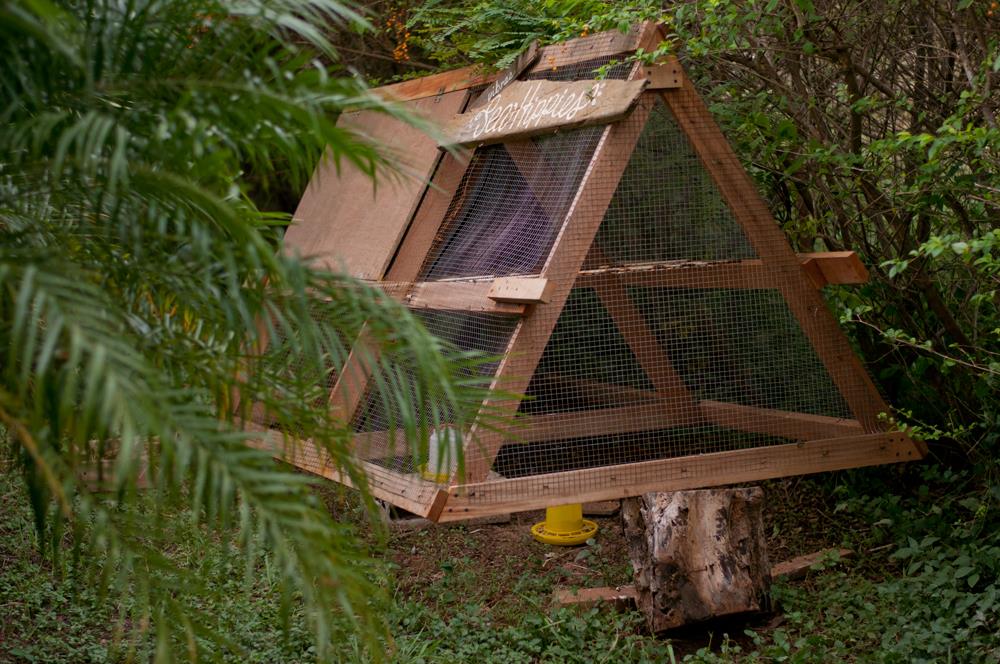Raising and Hatching Bantam Chickens
We have many goals to become more self-sustainable by producing instead of consuming. One way to do that is have a flock of yard birds that are producing daily eggs. Bantam chickens are smaller versions of standard chickens, and come in a variety of breeds – just miniature! They are about 1/5 to 1/4 the size of their full-size counterparts. Not only are they cute, but they require less room and are great egg producers, so we decided that was the kind we wanted. Our friend found us a healthy full-grown pair, a rooster and a hen. We named them Bonnie and Clyde.

We built a triangle style coop that we plan to add wheels to so that we can move it around the yard to fertilize patches of dirt for garden beds. Chickens are perfect for digging up the earth and enriching the soil before planting. They spend most of their time in here where its safe from predators, and we let them out to roam around and eat veggie scraps and bugs in the yard for a few hours a day, too. As soon as dusk approaches, they head back to the coop and jump up top to roost for the night.

Bonnie started laying eggs soon after arriving, and we decided to incubate and hatch them ourselves instead of eating them right away. This way, we’ll build up to a larger flock of birds that will be producing plenty of eggs to consume. We also were told by a friend who has chickens that hatching and raising the baby chicks in an incubator will not only give us a better survival rate, but friendlier chickens. The incubator was simple to build. You can use any kind of insulated box, like a cooler, and install a lightbulb socket with 25 watt bulb. We covered it with a thin transparent material to be able to see in but keep bugs out. You’ll also need a thermometer to read the temperature in the box and make sure it stays around 99-100 degrees Farenheit. It takes some trial and error to get the temp right, and you may have to poke holes and adjust as the outside temperature changes. Then, you place the eggs inside 1-7 days after they have been laid, and rotate them 3 times a day. After 21 days, you’ll start to see the egg move as the chick begins pecking its way out!

Our first chick hatched 2 days ago, and it was amazing to watch. It was incredible to see a living thing emerge from the egg that just 21 days ago was nothing but a potential life. Witnessing these miracles of nature is such a priceless experience. We cheered it on as it slowly emerged, starting with just a hole for its beak, and then kicking the shell open more and more. It can take 12 or more hours to fully emerge. When it finally does, it gets its orientation and dries out for the first 24 hours, and then you transfer it to a “brooder”, which is a similar heated box at a slightly lower temperature. This is where the little chick is currently, waiting for some of his brothers and sisters to hatch and keep him company! Soon we will have a family of bantams in the yard creating perfect planting patches for our veggie garden, and providing us with fresh eggs and endless entertainment and learning experiences.


